Indoor palms are among the most elegant and timeless houseplants you can grow. Their lush, tropical fronds instantly elevate a space, adding natural charm and a relaxing vibe. However, one of the most common issues indoor gardeners face with palms is browning tips. This frustrating problem can make even the healthiest palm look dull and neglected.
The good news? You can easily prevent and fix brown tips with the right care, environment, and attention. In this comprehensive guide, you’ll learn exactly how to grow indoor palms without brown tips — from choosing the right palm species to mastering watering, humidity, and light management.
1. Understanding Why Palm Tips Turn Brown
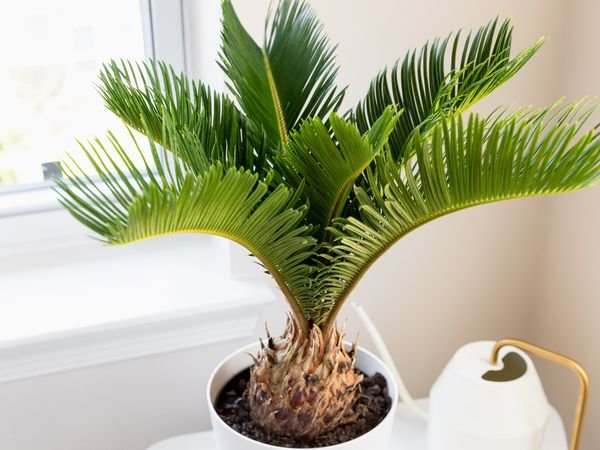
Before diving into solutions, it’s essential to understand why brown tips appear in the first place. Browning is often a sign of stress, indicating that the palm’s growing environment is less than ideal. Here are the most common causes:
- Low humidity: Indoor air, especially in air-conditioned or heated rooms, tends to be dry. Palms are tropical plants that thrive in humid environments, so low humidity quickly leads to browning.
- Improper watering: Both underwatering and overwatering can cause tip burn. Palms need consistent moisture but hate sitting in soggy soil.
- Fluoride or chlorine in water: Tap water with high levels of these chemicals can damage delicate root systems.
- Too much fertilizer: Excess fertilizer salts accumulate in the soil, burning root tips and causing leaves to brown.
- Excessive sunlight or heat: While palms need light, direct sunlight through glass can scorch their fronds.
- Poor air circulation or pest infestation: Stagnant air or pests like spider mites can also contribute to stressed, brown-tipped leaves.
By identifying the cause, you can apply targeted care to restore your palm’s vibrant green beauty.
2. Choose the Right Palm Variety for Indoors
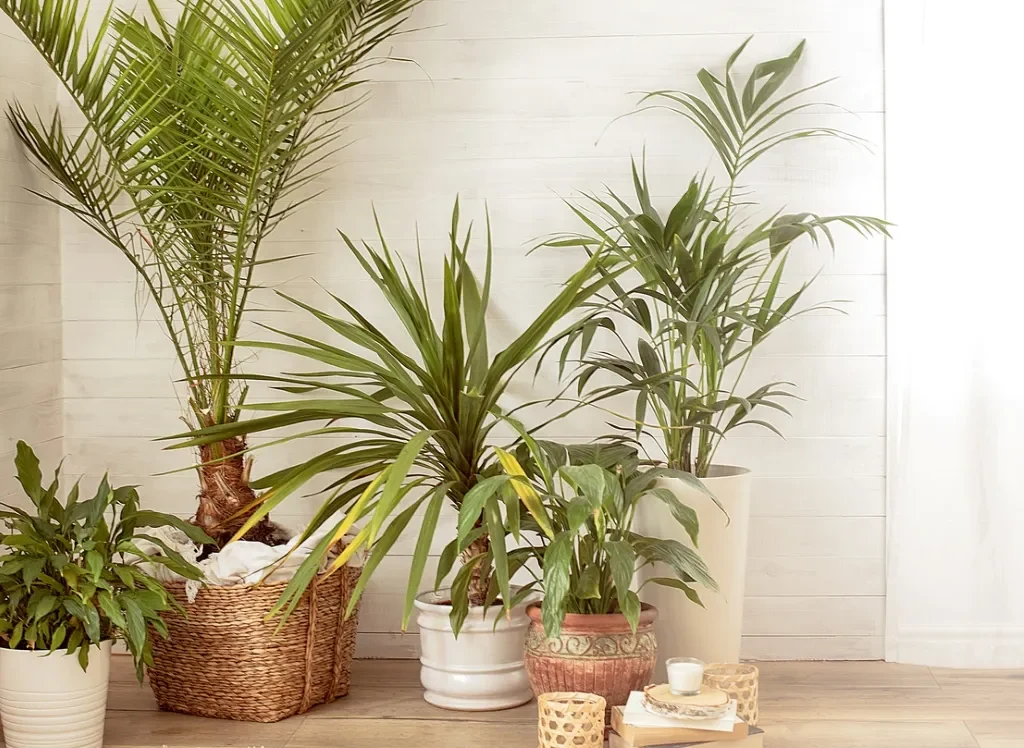
Not all palm species adapt well to indoor conditions. Some are better suited for tropical gardens or greenhouses. For minimal maintenance and healthier foliage, choose indoor-friendly palms known for tolerance to low light and drier air.
Best Palms for Indoor Growth:
- Areca Palm (Dypsis lutescens): Known for its soft, feathery fronds and air-purifying qualities. Prefers bright, indirect light.
- Parlor Palm (Chamaedorea elegans): One of the most shade-tolerant and low-maintenance palms. Ideal for offices and small apartments.
- Kentia Palm (Howea forsteriana): Slow-growing, elegant, and resilient against dry indoor air.
- Bamboo Palm (Chamaedorea seifrizii): Compact and hardy, great for filtering indoor air.
- Lady Palm (Rhapis excelsa): Adapts to lower light and humidity; great for beginner gardeners.
Selecting a species that naturally adjusts to indoor environments is the first step toward avoiding brown tips and maintaining healthy growth.
3. Provide the Right Light Conditions
Lighting is critical for palm health. Palms thrive in bright, indirect light. Too much direct sunlight can scorch leaves, while too little can weaken growth and make them susceptible to stress.
Lighting Tips:
- Place your palm near an east- or north-facing window where it gets gentle morning light.
- Avoid harsh south-facing windows, or diffuse the light with sheer curtains.
- If your space lacks natural light, supplement with a full-spectrum LED grow light for 10–12 hours a day.
- Rotate your plant every few weeks to ensure even light exposure and balanced growth.
Proper lighting ensures vibrant green fronds and reduces the risk of discoloration and brown edges.
4. Master the Art of Watering
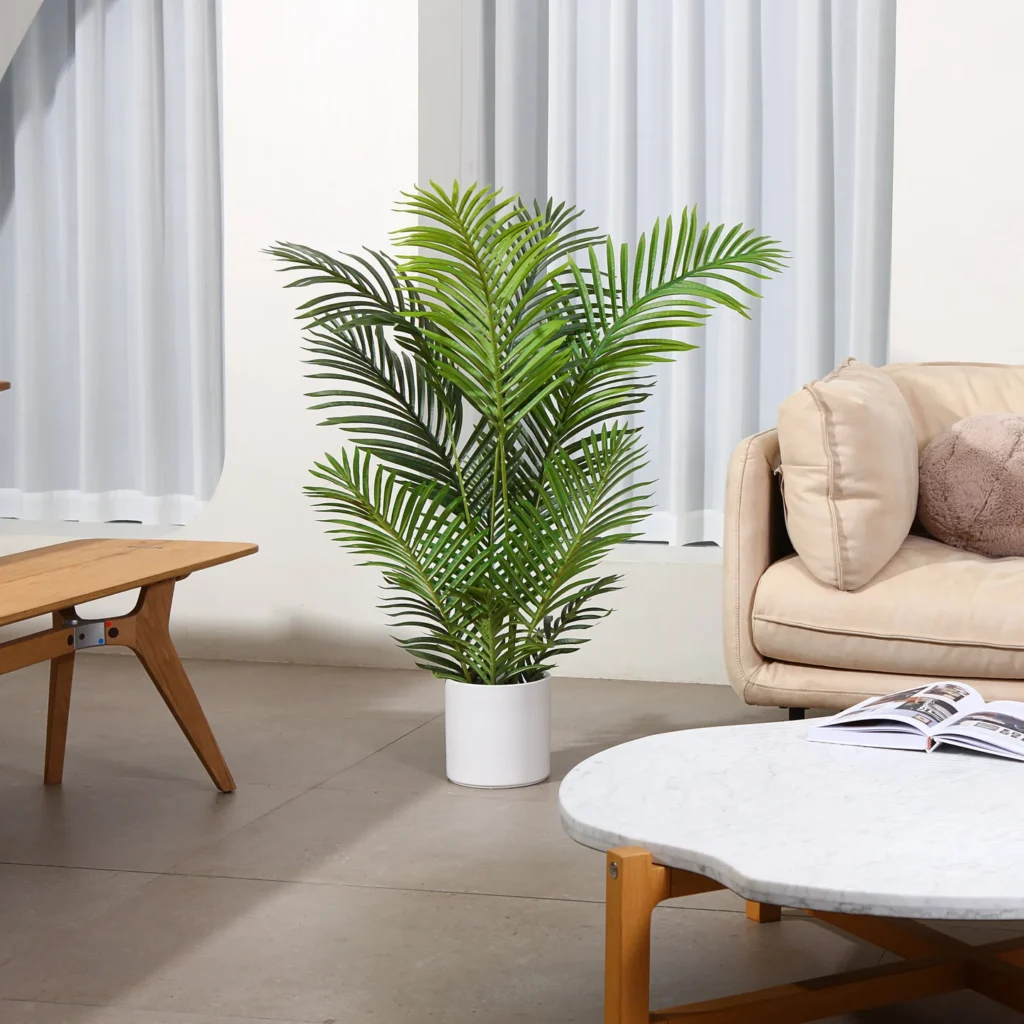
Watering mistakes are the most frequent cause of brown tips in palms. Palms prefer evenly moist but not waterlogged soil. Irregular watering — allowing soil to completely dry or stay soggy — stresses the plant.
How to Water Indoor Palms Correctly:
- Check the top 2 inches of soil. If it feels dry, it’s time to water.
- Use room-temperature, filtered, or distilled water. This helps avoid chlorine and fluoride build-up.
- Water thoroughly until water drains from the bottom, then empty the saucer to prevent root rot.
- Reduce watering in winter when growth slows and indoor air is cooler.
A consistent watering schedule keeps your palm hydrated and prevents the fronds from drying or browning at the edges.
5. Maintain Ideal Humidity Levels
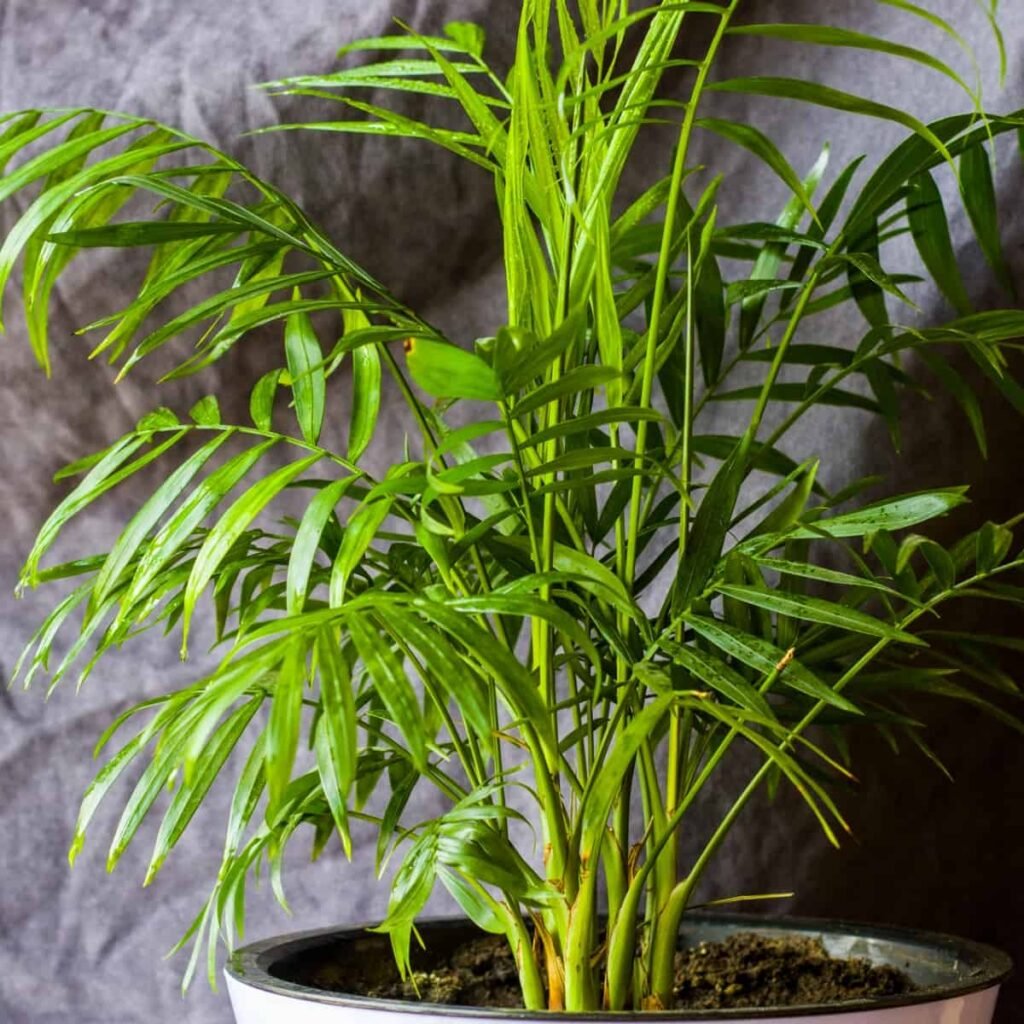
Palms are tropical plants, so they thrive in high humidity environments — ideally between 50–70%. Unfortunately, indoor air, especially during winter or under air conditioning, can drop below 30%.
Easy Ways to Increase Humidity:
- Mist the leaves with filtered water 2–3 times a week.
- Use a humidifier to keep the air moist, especially during dry months.
- Place the pot on a pebble tray filled with water (without letting the pot sit in water).
- Group plants together to create a mini-humid microclimate.
Consistent humidity prevents frond dehydration and ensures lush, healthy foliage.
6. Use the Right Soil and Potting Mix
A good potting mix is essential for palm roots to breathe while retaining enough moisture. Palms dislike compact or poorly draining soil.
Ideal Palm Potting Mix:
- 2 parts peat moss or coco coir (for moisture retention)
- 1 part perlite or coarse sand (for aeration)
- 1 part pine bark or compost (for nutrients)
Ensure the pot has drainage holes to avoid water stagnation. Repot your palm every 2–3 years to refresh the soil and prevent root binding.
7. Fertilize Carefully and Sparingly
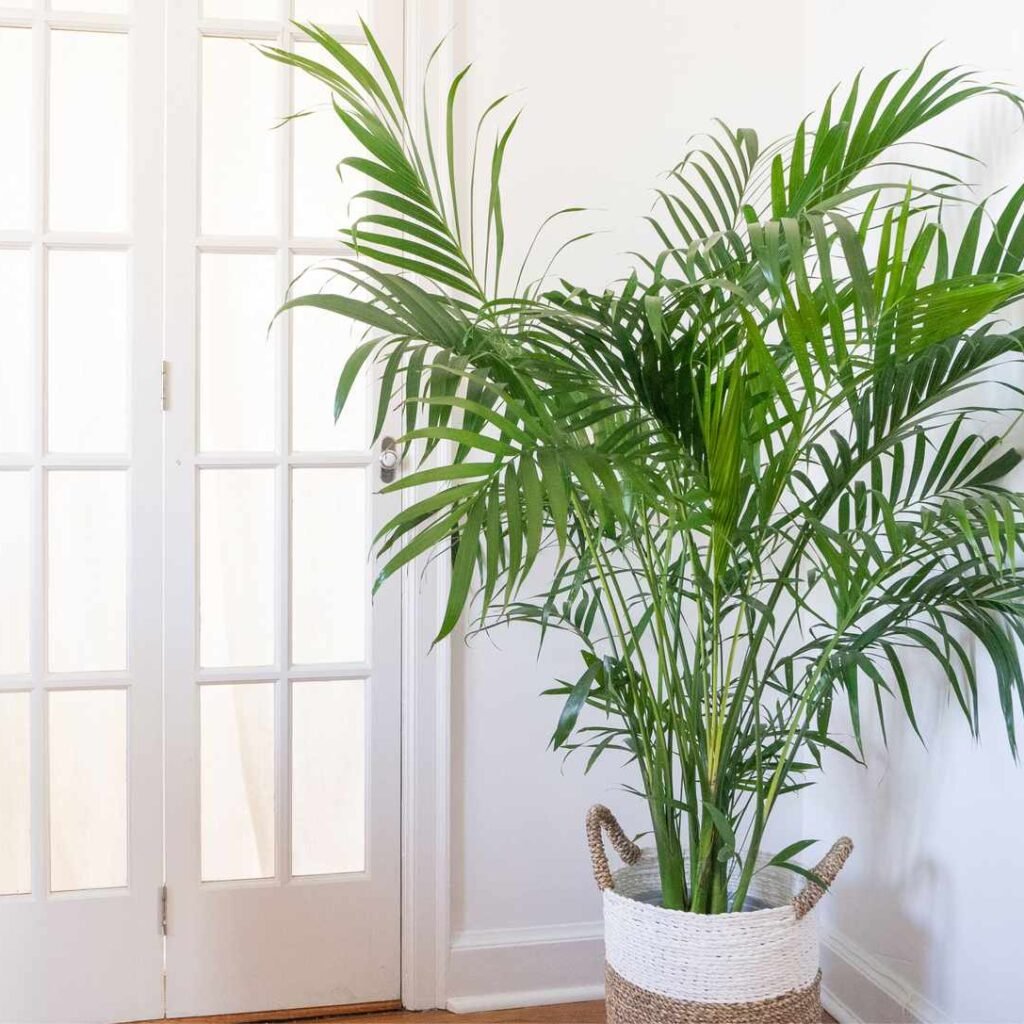
Palms are not heavy feeders, and overfertilizing can quickly lead to brown leaf tips due to salt buildup.
Fertilization Tips:
- Use a balanced, slow-release palm fertilizer (10-10-10 or 12-4-12) during the growing season (spring and summer).
- Feed once a month or as directed on the label.
- Avoid fertilizing in winter when the plant is dormant.
- Every few months, flush the soil with clean water to remove excess salts.
Moderation is key — less is often more when it comes to feeding indoor palms.
8. Monitor Temperature and Airflow
Palms thrive in warm, stable environments. Sudden temperature changes or cold drafts can shock the plant and cause brown tips.
Ideal Conditions:
- Maintain a temperature between 18–27°C (65–80°F).
- Keep palms away from heaters, vents, or cold windows.
- Provide gentle airflow using a ceiling fan or open window to prevent stagnant air and pest buildup.
Maintaining consistent indoor conditions helps your palm flourish without stress.
9. Regular Cleaning and Pruning
Dust can clog the pores of palm fronds, reducing photosynthesis and leading to dull or brown tips. Regular cleaning keeps your plant healthy and vibrant.
Palm Maintenance Routine:
- Wipe leaves gently with a damp cloth every 2–3 weeks.
- Trim brown or damaged tips using sterilized scissors, cutting just above the healthy green tissue.
- Avoid cutting healthy fronds, as palms don’t regenerate from a cut stem like other plants.
Keeping your palm clean not only boosts its appearance but also supports better growth and disease resistance.
10. Watch for Pests and Diseases
Common indoor pests like spider mites, mealybugs, and scale insects can weaken palms, leading to brown tips.
Preventive Measures:
- Inspect the plant regularly for webbing or sticky residue.
- Wipe infested leaves with neem oil or insecticidal soap.
- Quarantine new plants before placing them near your palm.
A pest-free environment ensures your palm stays lush and green.
11. Seasonal Care Adjustments
Palms respond differently across seasons. Adapting your care routine ensures year-round health.
- Spring and Summer: Active growth period—provide more water, light, and monthly feeding.
- Autumn and Winter: Reduce watering and stop fertilizing; maintain warmth and humidity.
These small seasonal adjustments prevent stress and tip browning during colder months.
12. Reviving Palms with Brown Tips
If your palm already has brown tips, don’t worry — it’s reversible!
Revival Steps:
- Trim brown edges carefully without cutting into the green part.
- Flush the soil with distilled water to remove fertilizer salts.
- Improve humidity and ensure even moisture.
- Relocate to a bright spot with indirect light.
Within a few weeks, new healthy fronds will emerge, restoring your palm’s beauty.
Conclusion
Growing indoor palms without brown tips is all about balance — the right mix of light, moisture, humidity, and nutrients. Once you understand your plant’s needs and maintain consistent care, your palms will reward you with lush, glossy foliage that transforms any room into a tropical retreat.
By following these detailed care strategies, you can enjoy the natural elegance of indoor palms year-round — free from brown tips and full of vibrant green life.
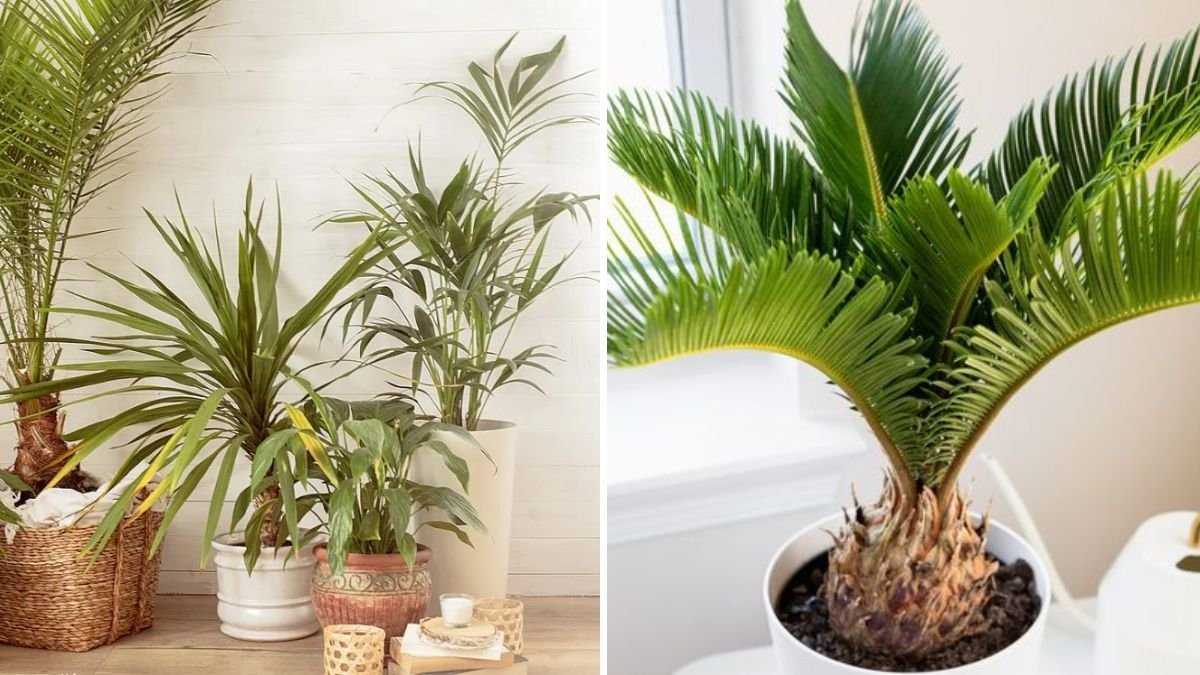




Leave A Comment